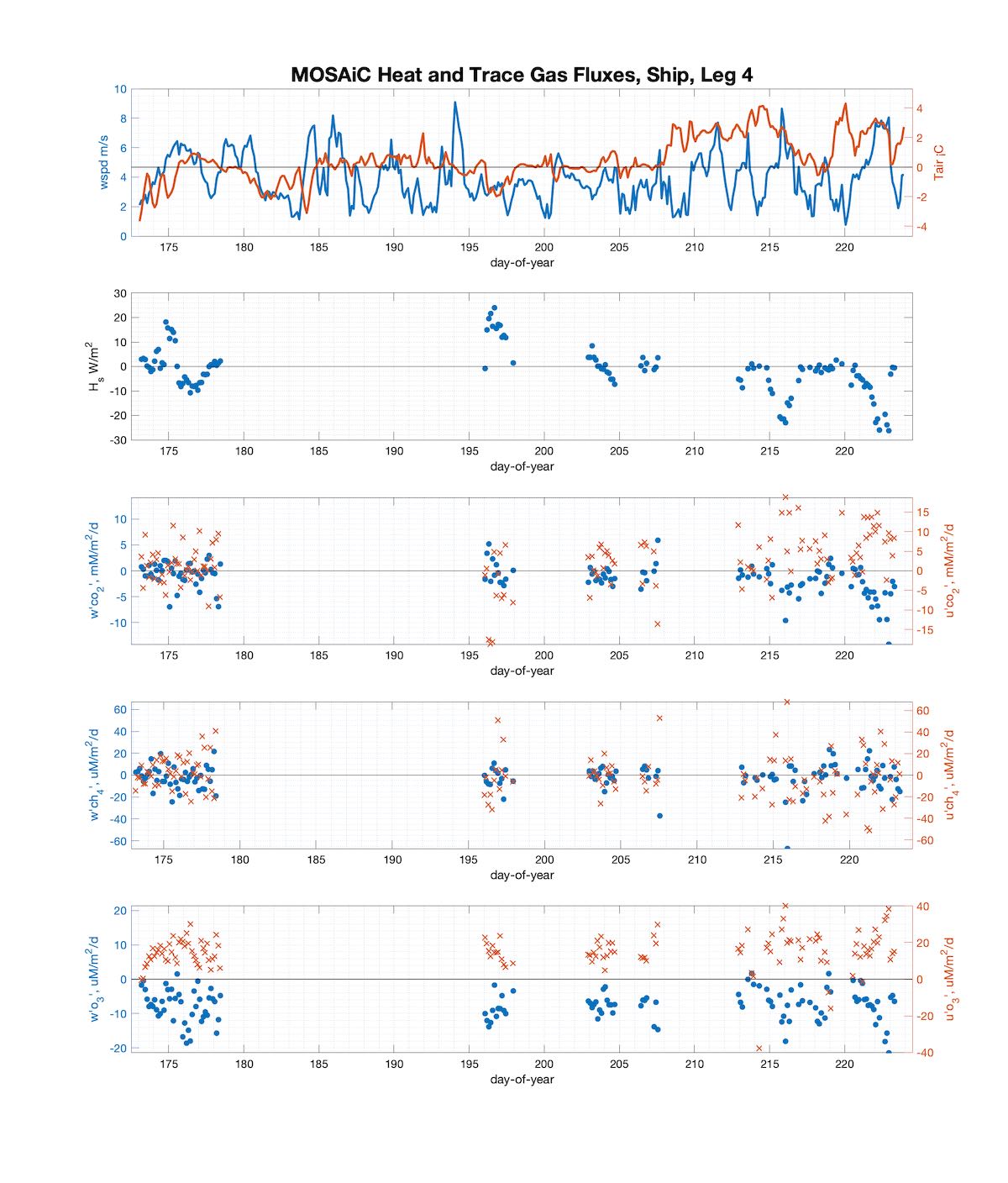Blog from the RV Polarstern: MOSAiC trace gas fluxes update 5.2
By Byron Blomquist

As of today (Thursday, Aug. 27th) we are ready to begin normal operations at the Leg 5 ice camp. The 'Met City Archipelago' is nearly complete with all the same systems deployed for Leg 4 installed on a collection of snow/ice islands surrounded by melt ponds. Ice thickness is about 1-1.5 m in most places and 2-2.5 m under the 10m tower. The met hut is on site and powered up and the SODAR is running. Tower sensors are all installed, including the Picarro CO2/CH4 flux system. The AWI optical fiber tower for temperature profiles spanning 10m above the ice to 40 m into the ocean is also installed and will begin measurements today after final calibration. We plan to raise the tower this afternoon. One ASFS sled has been making met flux measurements at Met City since our arrival. The second sled has been operating in a nearby site with more exposure to melt pond surfaces. A polar bear and cub appeared on site last night at about 10 PM to check out our work.
Conditions for aerosol and gas concentration measurements on the bow have been mostly good since our arrival. I've worked up some ship tower fluxes from Leg 4 in this plot showing w'c' (blue markers), sensible heat flux and wind/temperature. We haven't seen methane flux much above the detection limit, and CO2 flux was consistently above the DL only in the marginal ice zone at the end of Leg 4 (after day 213). Ozone deposition fluxes have been around 10 uM/m2/d.
We are now right at the beginning of the refreeze season. The sun is only about 10° above the horizon and surface conditions alternate between freeze and thaw depending on weather systems and cloud conditions. Melt ponds froze over shortly after our arrival but have seen a bit of surface thaw over the past two days. The surface fresh water layer we've seen on Leg 4 persists into Leg 5. Melt pond water is still mostly fresh and when new cracks and leads appear they immediately fill with fresh water up to 50 cm deep (salinity ~ 2 ppt). The physical, chemical and biological characteristics of the fresh surface layer are a focus of the OCEAN, ECO and BGC teams. This condition looks like it will persist right through the refreeze. As I mentioned before, this has major implications for aerosol production and turbulent transport of heat and gases between the ocean mixed layer and atmosphere.